
March 2022 — This section of the toolbox uses market information gathered in Part I, “Understanding the Market,” to learn about your downtown’s key consumer groups and how to reach and serve them better. This includes understanding their perceptions of downtown as a place to live, work, shop and play. With knowledge of these consumer groups, an appropriate brand for the district can be created along with effective marketing programs that communicate downtown’s distinctive qualities.
Three uses of the market analysis are described in this section:
Related Content
CEOs for Cities, Branding Your City
This section of the toolbox is not intended to be the sole resource for your district’s marketing efforts. It only scratches the surface of marketing planning. Instead, this brief overview is intended to explain how market analysis data can be applied to selected examples of image development, branding and marketing.
1. Defining Your Key Markets Segments and Market Position
Market Segments
How would you describe your current customer groups? Who are they? How do they behave? What are their attitudes about downtown? You can use your market analysis to better understand your downtown’s current and potential customers. The analysis can help answer questions about their shopping behavior, preferences, and attitudes about downtown. Specific target market segments that have been identified in your market analysis may include, but are not limited to:
- Downtown residents
- Downtown employees
- College students
- Medical center visitors
- Leisure Tourists
- Business Travelers
- Recreational and second homeowners
- Young professionals in area
- In-Commuters
- Thru-Commuters
Typically a downtown district will serve numerous segments. By knowing the demographics and lifestyles of each, you can look for more customers like them. Understanding their buying behavior will help you deliver what they want when they want it. By understanding their attitudes, you will know what they like and dislike about downtown; fix what they don’t like and provide greater value that will distinguish your downtown from competitive commercial districts.
Competition
Who are your competitors? How do your competitors deliver value to their customers – to your customers? What do they do better than you? What is your competitive position? It is important to understand the competition to know what might be drawing consumers away from your downtown. Use your market analysis to develop a clear understanding of the competition and how your downtown can gain competitive advantage over them.
Gaining competitive advantage is difficult. Over time, your downtown district can more effectively compete by consistently providing the following to one or several customer groups underserved or not served at all by competitors:
- Variety
- Uniqueness
- Value
- Service
- Experience and “sense of place”
Use your market analysis to help answer questions about how well competing commercial centers serve their customers. It is important to understand the competition to know why they might be drawing consumers away from your downtown. To gain a competitive advantage, it is important to find an underserved customer segment(s) that your downtown can serve better, and provide them with a unique variety of products, services and experiences not offered by other districts.
Market Position Statement
With a research-based understanding of your customers and competition, a “market position statement” for downtown can be developed. This statement includes two components: primary goods and services offered, and the primary consumer segments served. The market position statement includes the tactical steps that you will take to achieve your goals including realistic development opportunities and the desired business mix for the district. According to Todd Barman of the National Trust Main Street Center:
- A market position statement describes where downtown is or should be “positioned” based on market information, community desires, and realistic expectations.
- It identifies a downtown specialization or niche based on a primary consumer segment served or a primary set of goods and services offered.
- It distinguishes downtown’s competitive advantage versus surrounding commercial centers.
- It includes a synopsis of the downtown’s major market groups and a description of its opportunities for growth.
Sample Market Position Statement: Downtown Springfield, the center of state government and a regional medical complex, benefits from a large, stable employee base that supports the convenient retail shops and services, as well as the restaurants and entertainment businesses. Many people live downtown in historic renovated buildings and adjacent neighborhoods. Downtown is an interesting and attractive historic environment for tourists, focusing on Abe Lincoln sites and other heritage attractions. The convention business is also flourishing. The visitors support tourism-related retail shops and restaurants. The growing number of dining establishments, night spots with live entertainment, the arts center, and arts-related businesses are a regional draw. Source: Todd Barman – National Trust Main Street Center
Use Your Market Analysis Findings to Answer the Following:
- What is my geographic market?
- What are my target market demographic characteristics?
- How is my consumer market changing and how can businesses effectively respond?
- What customer segments am I currently attracting and which ones offer potential?
- Who is my competition?
To answer these questions, use the findings from your work in Part I of the toolbox: Understanding the Market.
2. Improving the Image and Developing a Brand for Downtown
Image
Different people have different images of your downtown. It is important to understand what your current image is in order to assess if there is a need to change it. The image that business operators hold may be different than that of local consumers. Market analysis may show that there is disconnect between these two groups. Business operators may hold a positive image of their downtown while shoppers may feel downtown is unsafe, boring or too loud. Regardless of whether this is true or not, you must address shoppers’ sources of dissatisfaction or risk loss of their business.
It may be necessary to try to change or even build an image of the downtown in both current and potential consumers’ minds. This may require communicating your new vision to target market segments. Market analysis findings should point to attributes that set your downtown apart from other places. These attributes can become part of a brand for your downtown.
Branding
Branding is the process of selling a positive image of your downtown. The brand is a unique set of emotional connections and positive expectations in the minds of residents, visitors and others. Branding fosters the sense of community that keeps key market segments interested in downtown and that makes the community an attractive destination for various market segments.
Branding is more than the words and images used along with a place name; those things can change over time. The slogan, logo and design are simply tools to help change current perceptions, by appearing not only in printed materials but also in physical promotions such as your downtown way finding system, signage, and street-scaping. It is a core promise that is made to the customer.
According to CEO for Cities, “A brand — clear, compelling and unique — is the foundation that helps to make a place desirable as a business location, visitor destination or a place to call home. Development of a brand strategy for a city or downtown leverages the features of that place to provide a relevant and compelling promise to a target audience. It is not an ad campaign or a tagline. Rather, the branding strategy is a deeper, more emotionally shared vision that influences actions.”
There are many reasons why it is critical for a place to have a brand strategy, but the most common is to stimulate economic growth. That’s because a strong brand can:
- Shift the perception of a place that may be suffering from a poor image.
- Create a common vision for the future of the community and its potential.
- Provide a consistent representation of the place.
- Enhance its local, regional and/or global awareness and position.
- Shed unfavorable stereotypes associated with a place and make it more appealing.
If your city wants to initiate a brand strategy, the following questions have to be answered honestly and completely:
- What does the downtown district stand for today – both its strengths and weaknesses?
- What can and should the place stand for in the future, and how do we articulate that?
- What will make the place unique, valued and attractive to target businesses and consumer audiences?
- How will we make this new positioning a reality?
- What role do key stakeholders and community groups have in bringing the brand to life?
- How will we measure success of the brand strategy?
A successful branding process is neither easy nor quick. It involves research, design, education and maintenance. If done well, branding can boost retail traffic; attract residents to the downtown area; and aid downtown and community organizations by increasing volunteerism, giving and credibility.
3. Implementing Marketing Programs
Marketing programs can implement the brand strategy and encourage key market segments to increase their use of downtown as a place to live, work, shop and play. By marketing the district’s unique characteristics, consumer and investor confidence in the district can be strengthened resulting in increased commercial activity and investment. It is important to remember to place adequate marketing focus on actual downtown activities, and not just on downtown as a place. People come downtown to participate in activities, to take advantage of sales, and to have an enjoyable experience.
Marketing Goals and a Communication Plan
You have to know what you want to achieve in your downtown in order to know what marketing programs are best. Marketing goals will likely be different for every downtown. Example goals are listed below:
- Increased consumer spending
- Increased visitation and sidewalk traffic
- Increased usage of downtown by specific market segments
- Increased attendance at downtown events
A key part of marketing downtown is having a communications plan. Regular communication – with the press, the public and with downtown business is essential to maintaining your brand image. Much of your marketing success for the downtown depends on maintaining coordination. Merchants, organizations, residents and visitors all must be able to recognize, relate to, and promote a consistent brand message. It is important to keep branding design and education efforts up-to-date, while sustaining the organizational partnerships that support the community. Your communications plan should outline the types and frequency of communications that the downtown organization will produce throughout the year. This will include advertising and promotion, public relations and special events.
Advertising/Promotion
Advertisements are the messages that you design and for which you purchase time or space in media. For example, cooperative advertising for retailers or event promotion flyers and brochures are advertisements. Advertising also includes merchandizing, in which your downtown logo and/or slogan are put onto bags, tee-shirts, balloons, etc. Promotions involve disseminating information about a downtown in other ways including sales promotions, new resident packets, merchandising, direct mail, personal selling, and trade shows.
After you know who you want to specifically target and what messages you want to send, you need to know the vehicles for messaging. Several methods of advertising and promotion can help to peak consumers’ curiosity and lure them downtown. Use your market analysis findings to assess the likely return on investment from various types of advertising and promotion initiatives.
Public Relations
Public relations is indirect promotion and often requires a more coordinated, long-term communications plan. Public relations seeks positive press coverage and involves convincing editors and reporters that your downtown is worth writing about. Media coverage of your downtown is often more effective to promote via a supposedly objective third party than directly via advertisements. However, free publicity means you cannot control the message as you can with advertising.
Special Events
Activities and programs are valuable methods to showcase what’s going on downtown and improvements taking place. These events should cater to the specific market segments that your downtown is currently attracting or hoping to attract. Events can bring people into an area to experience the new brand, and to have a positive and memorable experience. Events (and downtown sponsorships) can create relationships between downtown business and consumers through activities that draw interest groups downtown. They can help reinforce downtown’s brand identity. Example events include car shows, sidewalk sales, music festivals, college student/parent activities, employee appreciation programs, and countless other activities that reflect local interests.
Events also need to fit the needs of the business community. Some businesses seek more foot traffic, while others would prefer actual purchasing incentives. Some business will want events to attract business at a particular time of day, while others may be more interested in events that encourage repeat business.
An article published by the National Trust for Historic Preservation’s National Main Street Center recommends the following: “Before you create any special event as a part of a campaign, ask yourself: What is the purpose of this event? Which of the largest market segments will the event attract? Most importantly, how does this event support and reinforce the image you are creating? Until these questions are answered, any special event produced can do as much to thwart the image strategy as advance it.”
About the Toolbox and this Section
The 2022 update of the toolbox marks over two decades of change in our small city downtowns. It is designed to be a resource to help communities work with their Extension educator, consultant, or on their own to collect data, evaluate opportunities, and develop strategies to become a stronger economic and social center. It is a teaching tool to help build local capacity to make more informed decisions.
This free online resource has been developed and updated by over 100 university educators and graduate students from the University of Wisconsin – Madison, Division of Extension, the University of Minnesota Extension, the Ohio State University Extension, and Michigan State University – Extension. Other downtown and community development professionals have also contributed to its content.
The toolbox is aligned with the principles of the National Main Street Center. The Wisconsin Main Street Program was a key partner in the development of the initial release of the toolbox. One of the purposes of the toolbox has been to expand the examination of downtowns by involving university educators and researchers from a broad variety of perspectives.
The current contributors to each section are identified by name and email at the beginning of each section. For more information or to discuss a particular topic, contact us.

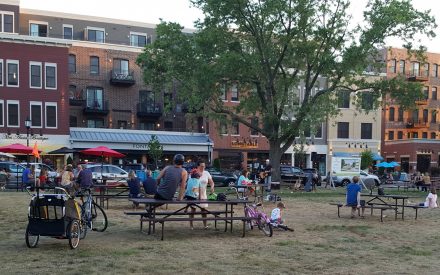



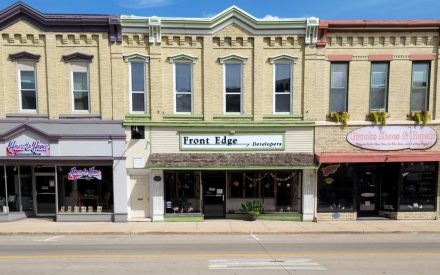

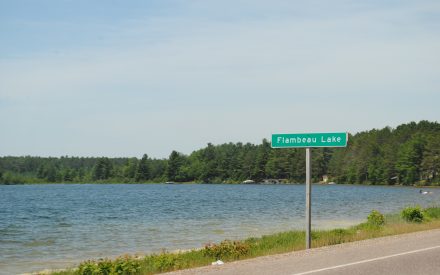


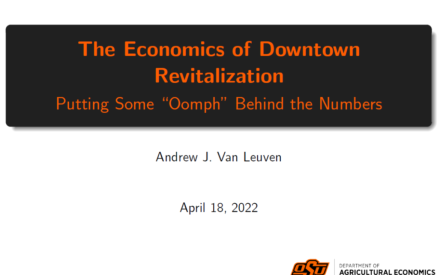

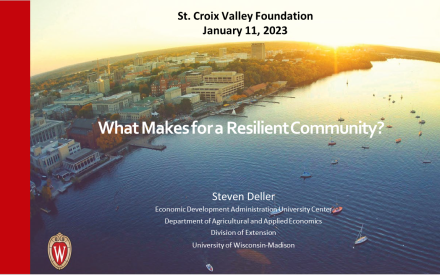 What Makes For A Resilient Community?
What Makes For A Resilient Community? Design Wisconsin: Hustisford Design Team
Design Wisconsin: Hustisford Design Team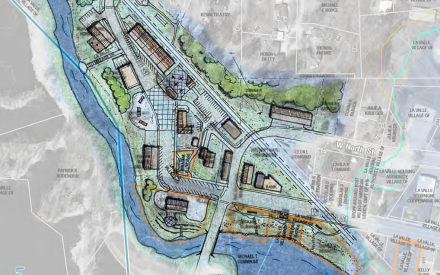 Design Wisconsin: La Valle Design Team
Design Wisconsin: La Valle Design Team Creative Economy Summit
Creative Economy Summit


